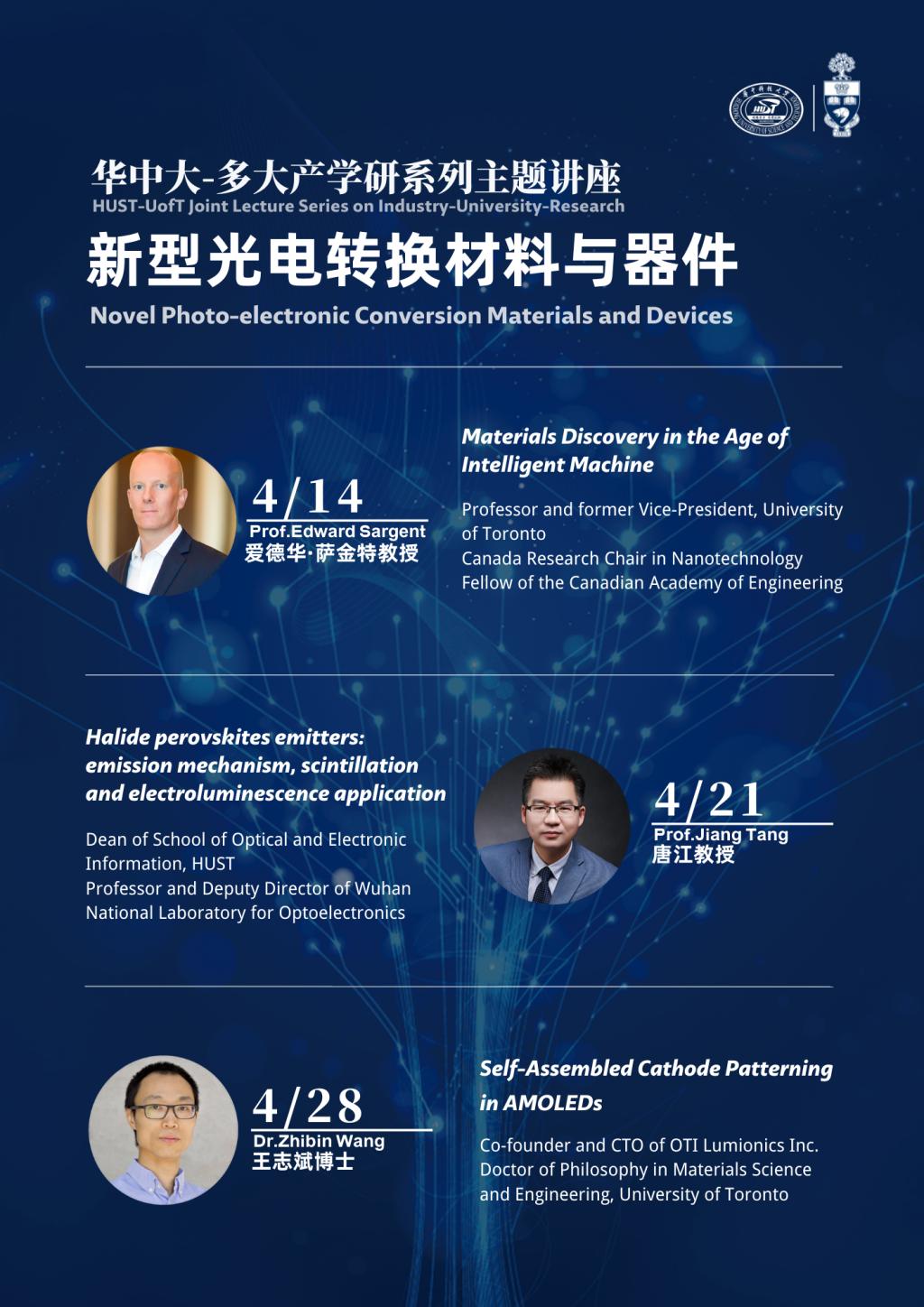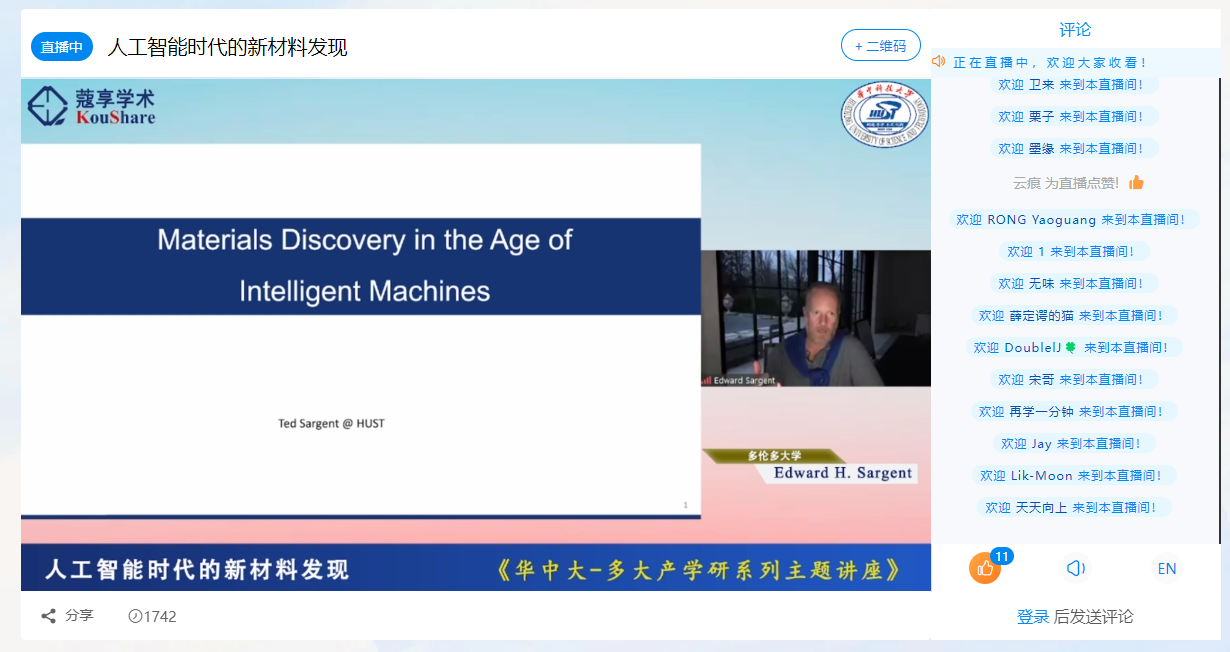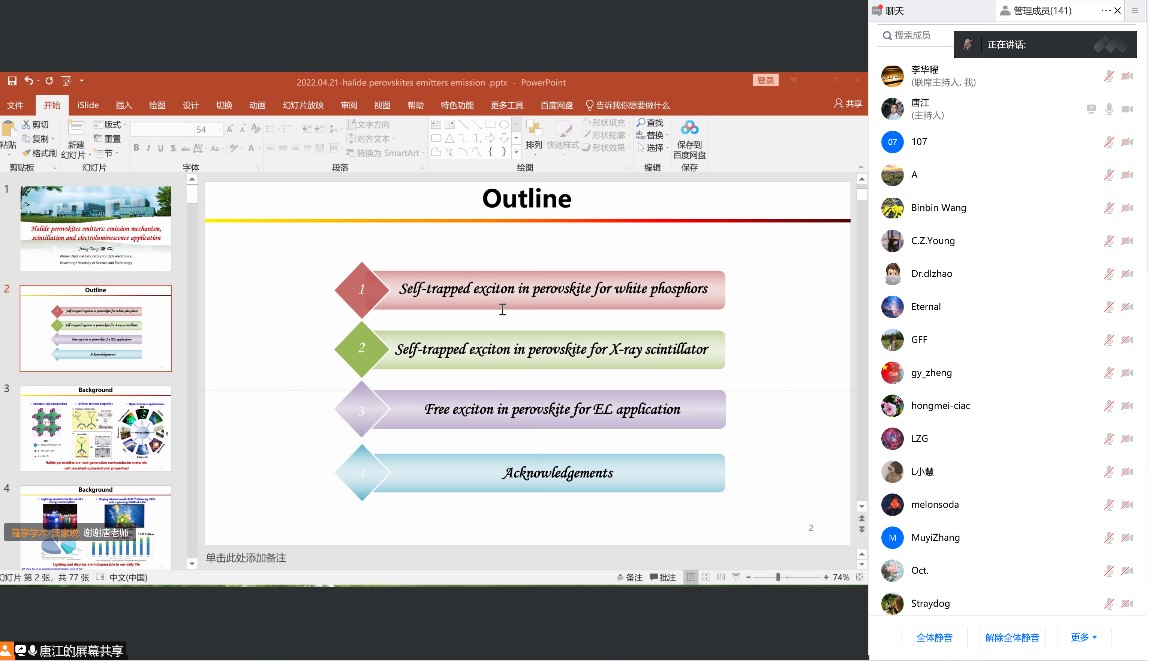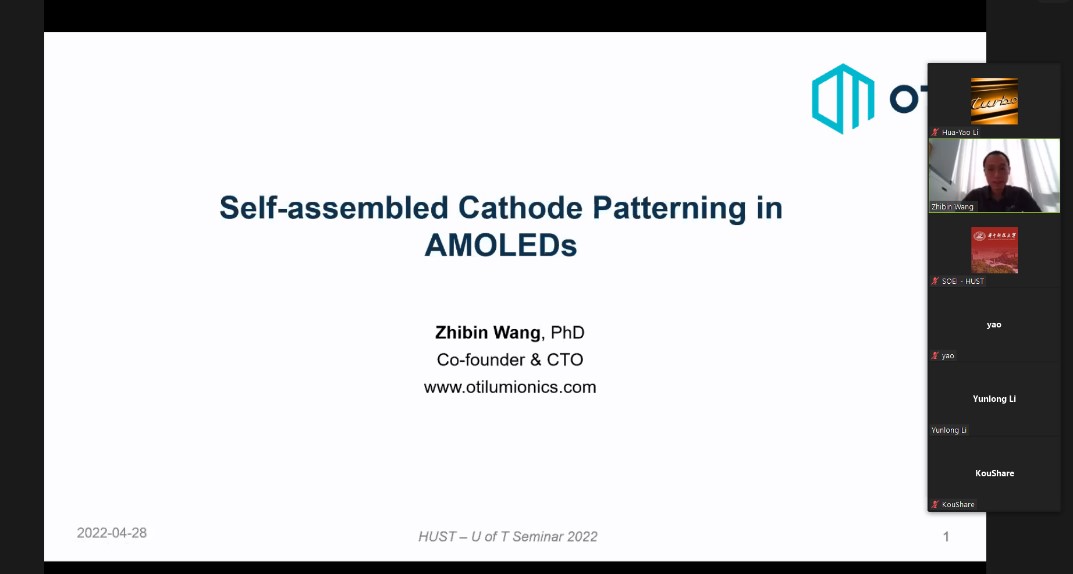From April 14th to 28th, 2022, the session on photoelectricity of “Hust-UofT Joint Lecture Series on Industry-University-Research” was held. The event was sponsored by the Office of International Affairs and the School of Optical and Electronic Information.
This series focused on "New Optoelectronic Conversion Materials and Devices", and three scholars were invited to deliver three remarkable online lectures from the perspectives of academia, scientific research, and industry, respectively. They are Professor Edward Sargent, Fellow of the Royal Society of Canada and Professor of the University of Toronto, Professor Jiang Tang, Dean of the School of Optical and Electronic Information of HUST, and Dr. Zhibin Wang, Founder and CTO of ITO Lumionics of Canada. More than 7,000 researchers and students from HUST, University of Toronto, Fudan University, University of Science and Technology of China, and other universities at home and abroad participated in the online event. Heated discussions were held through the live streaming platform.

On the morning of April 14, Professor Edward Sargent gave the first lecture of the series online, titled "Materials Discovery in the Age of Intelligent Machines", with Professor Jiang Tang presiding over the event.

During the lecture, Professor Sargent introduced electroluminescence of perovskites, perovskite solar cells, and electrochemical catalytic carbon dioxide reduction, and demonstrated the role of artificial intelligence in material exploration, demonstrating the enormous potential of new materials. Besides, he also predicted that by 2050, photovoltaic technology will be the key technology for reaching zero carbon emissions. Over the past few decades, the efficiency of perovskite solar cells and tandem solar cells has soared. It is expected that as science and technology develop, perovskite solar cells prepared by the low temperature solution will enable the production of low-carbon emission and low-cost solar cells.
On the evening of April 21, Professor Jiang Tang gave a special report on the theme of "Halide perovskites emitters: emission mechanism, and scintillation and electroluminescence application".

Perovskite materials are widely used in the field of X-ray detection scintillators with their advantages of high light yield, short afterglow, no moisture absorption, and large-area preparation. Professor Tang introduced the recent accomplishments of his team in halide perovskite emitters from four perspectives: the self-trapped excitons (STE), the application of STE emission for scintillators, and the exploration of free exciton emission, and rare-earth halides for electroluminescent devices.

In the interactive section, Professor Tang had a full online exchange with the attending professors and students and discussed the issues of STE emission, copper halogen system scintillator, and blue LED in the report. The interaction was enhanced by an engaging Q&A session with a strong academic atmosphere.
On the evening of April 28th, Dr. Zhibin Wang delivered the third lecture on the theme of "Self-Assembled Cathode Patterning in AMOLEDs". As a graduate of the University of Toronto and the co-founder and CTO of OTI Lumionics, Dr. Wang has over 14 years of experience in the field of organic optoelectronics. He developed OTI Lumionics' three core technology series and filed over 120 patent applications.

During the lecture, Dr. Wang introduced a new self-assembling patterning process for patterning metal cathodes with µm to mm scale features for Active Matrix Organic Light Emitting Diodes (AMOLED). He also discussed different applications of this new cathodic patterning process in AMOLEDs including under-display sensors, such as under-display cameras and under-display infrared sensors.

These three lectures not only presented the latest research findings in the field of new photoelectric conversion materials and devices but also shed light on the development of new displays, lighting, and other fields, allowing participants to gain a better understanding of the field’s cutting-edge technology.
After the lectures, the photoelectric session of “HUST-UofT Joint Lecture Series on Industry-University-Research” was concluded. The series of lectures aims to promote academic exchanges between HUST and the University of Toronto in Canada, encourage interdisciplinary research, and enhance mutual understanding between industry, education, and research in different disciplines. In the next few months, HUST will continue to host sessions on intelligent elderly care robots and biomedicine in the coming months in collaboration with the University of Toronto.
Founded in 1827, the University of Toronto is one of the world's leading public research universities and ranks first in Canada and 18th in the world according to THE World University Ranking 2022. It has remarkable scientific research accomplishments in engineering and medicine. HUST and the University of Toronto began cooperating in 1983, and officially signed a memorandum of cooperation in 2019, in addition to signing a cooperation agreement on a joint research center for intelligent elderly care robots and a student exchange project the bioscience major.
Source: School of Optical and Electronic Information
Written by: Gong Jiarui
Edited by: Shi Can, Jiang Jing
